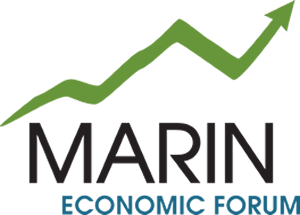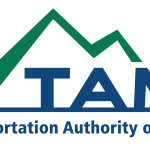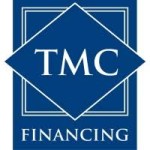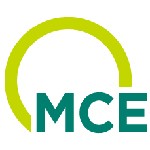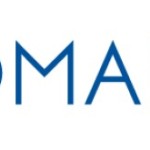Planning, innovation are keys to recovery for Wine Country businesses from coronavirus economic crisis, experts say
Coming months will reveal the depth of the economic pain caused by public health measures to slow the coronavirus pandemic and how long it will take to bounce back, but North Bay businesses need to plan now how they will survive the crisis and bring back revenue, according to financial and tourism experts.
“This is an issue of depth and duration, and (public) policies are trying to shrink both of those in such a way that once we open up we turn the corner more quickly,” said Sonoma State University economist Robert Eyler to 735 professionals and civic leaders participating in North Bay Business Journal’s Business Recovery Conference webinar Thursday morning.
The goal is to avoid a loss of capacity from the labor and employer sides of the economic equation, according to Eyler. He said the shock of the business lockdowns led to initial job losses and lower sales, but the fear is that prolonged lower sales will lead to losses of businesses. The release of last month’s employment data May 22 should show the depth of the local job impact, he said.
About 147,000 unemployment insurance claims were filed by residents in Sonoma, Solano, Marin, Napa, Mendocino and Lake counties in the two months, with the unemployment rate currently between 15% and 20%, Eyler said. That’s largely because of local dominance of the four sectors leading the U.S. job losses, particularly retail, services and tourism. Eyler noted that most North Bay county levels of new claims historically track with California’s, but new applications in Marin tend to lead the statewide trend.
(I)f we don’t allow people to move around, especially in California, we will lose an entire tourism year.
Sonoma State University economist Robert Eyler
The shape of the recovery has been a big debate point among economists. Will it be V-shaped, where the bounceback is as quick as the fall; U-shaped, where the time at the bottom could be longer; or even like the Nike “swoosh” logo, where there is a slow emergence? Eyler is predicting a “modified V,” where public policy — relaxing of the lockdown and injection of relief funds — helps determine the timing and upward slope of the exit.
The key is to reopen the economy in ways where the businesses can easily “flex into the situation,” to be able to adapt and innovate relatively quickly to the health guidelines and customer demand.
“So one of the concerning pieces is if we don’t allow people to move around, especially in California, we will lose an entire tourism year,” Eyler said. “And if that happens, it’s going to be very problematic, because there’s all kinds of economic-impact connections from those industries into the other parts of the economy.”
That’s why Sonoma County Tourism is talking with local public officials and operators of restaurants, wineries and hotels about a phased approach to recovery, said Todd O’Leary, vice president of marketing and communications. The first phase would be outreach to locals emerging from the lockdown to patronize surrounding businesses. Next, outbound marketing would focus on the “drive market,” visitors within in a few hours’ car trip to Wine Country. Eventually, the effort will move to the “flight market,” encouraging visitors to board planes again.
“People will want to make sure that not only they can travel but they can travel safely and have a safe experience in coming here to Sonoma County,” O’Leary said. Part of that is getting the word out about new reopening guidelines from hospitality and wine trade organization.
We’re still kind of in survival mode and trying to figure out what the next phases look like.
Julie Clowes, San Francisco Bay Area regional head of the Small Business Administration
One of the public-policy lifelines being thrown to businesses hard hit by the lockdowns of certain sectors are federal loan programs through the Small Business Administration.
Julie Clowes, who oversees the organization’s operations in the greater San Francisco Bay Area, acknowledged during the conference that the process for small businesses to access the new SBA relief funds has not been “perfect” and that the rapid creation of these programs and guidance for them has led to “piecemeal” communication of procedures for borrowers and lenders that’s different from the SBA’s standard approach to rolling out relief money.
“We’re used to disasters, where there’s a start date and an end date,” Clowes said. “And in this particular case, we don’t have an end date. We’re still kind of in survival mode and trying to figure out what the next phases look like.”
Two big questions lingering about the SBA’s relief money is how long it will last and how the debt forgiveness part of the Payroll Protection Program loans will work. The federal CARES Act authorized $349 billion for the new program in the first round, but that ran dry on April 16 — in 13 days. A second round of $310 billion for the program became available April 27 and still has money, Clowes said.
In the second round of PPP funding, the SBA had approved 2.69 million loans from 5,428 participating lenders, totaling $192.6 billion with an average loan size of nearly $72,000, according to the agency’s tally Wednesday. But there have been a number of reports of problems for small enterprises to get through to authorized lenders to start the application process.
“Some banks may have exhausted their internal resources and maybe can’t lend anymore,” Clowes said. “Other banks are actually opening it up and accepting even more applications.”
The SBA has enlisted partner programs such as the SCORE group of executive counselors and the Small Business Development Centers to help applicants with the loan application program, she said.
Also part of the CARES package was funding for economic injury disaster loans, and nearly $8 billion had been lent through April 24, when those funds ran dry. California got the nation’s largest share of such loans and funding, 8,985 loans for $1.896 billion. Part 2 of the CARES funding replenished the disaster loan coffers but limited approvals to agricultural businesses, because they were newly added to eligibility.
Because of the virus economic crisis, the SBA also has deferred payments on existing disaster loans through the end of this year and is paying principal and interesting on existing lending (or new deals before Sept. 27) for operations and real estate (programs 7(a) and 504, respectively) as well as microloans for six months.
Clowes recommended borrowers that make installments via automatic payment readjust that scheduling to avoid outlays during the deferment.
While the U.S. House of Representatives is gearing up to vote Friday on a $3 trillion new round of relief funding, called the HEROES Act, the trend may be toward less funding for SBA relief loans in future phases of the recovery and more direct payments to individuals and others, Clowes said.
We’re in for a year or two of transition to the new normal.
Terry Hill, BPM advisory partner
In talking with hundreds of client businesses on the West Coast, panelist Terry Hill, a partner in BPM’s advisory group, said he’s seen three commonalities on how these operations will fare in coming months and even a year from now: SBA loan forgiveness, emergence from the crisis and “harvest strategy.”
Businesses seeking PPP debt forgiveness should leverage collaboration tools like team software to collect and talk about documentation for payroll, rent, utilities and other expenses that are required to show allowed uses of the loan funds for at least eight weeks, Hill said.
He’s advocating cash-flow forecasting that looks beyond the SBA relief financing into plans for this summer and into 2022. Businesses that find they will run out of money need to start planning now for the next step of the business, such as capital infusion, sale or closure with transfer of wealth back to the owners.
“We’re in for a year or two of transition to the new normal,” Hill said.
Be the first to receive updates and news from MEF by subscribing or liking us on our social media pages: Facebook, Twitter, and LinkedIn!
Tags: news
